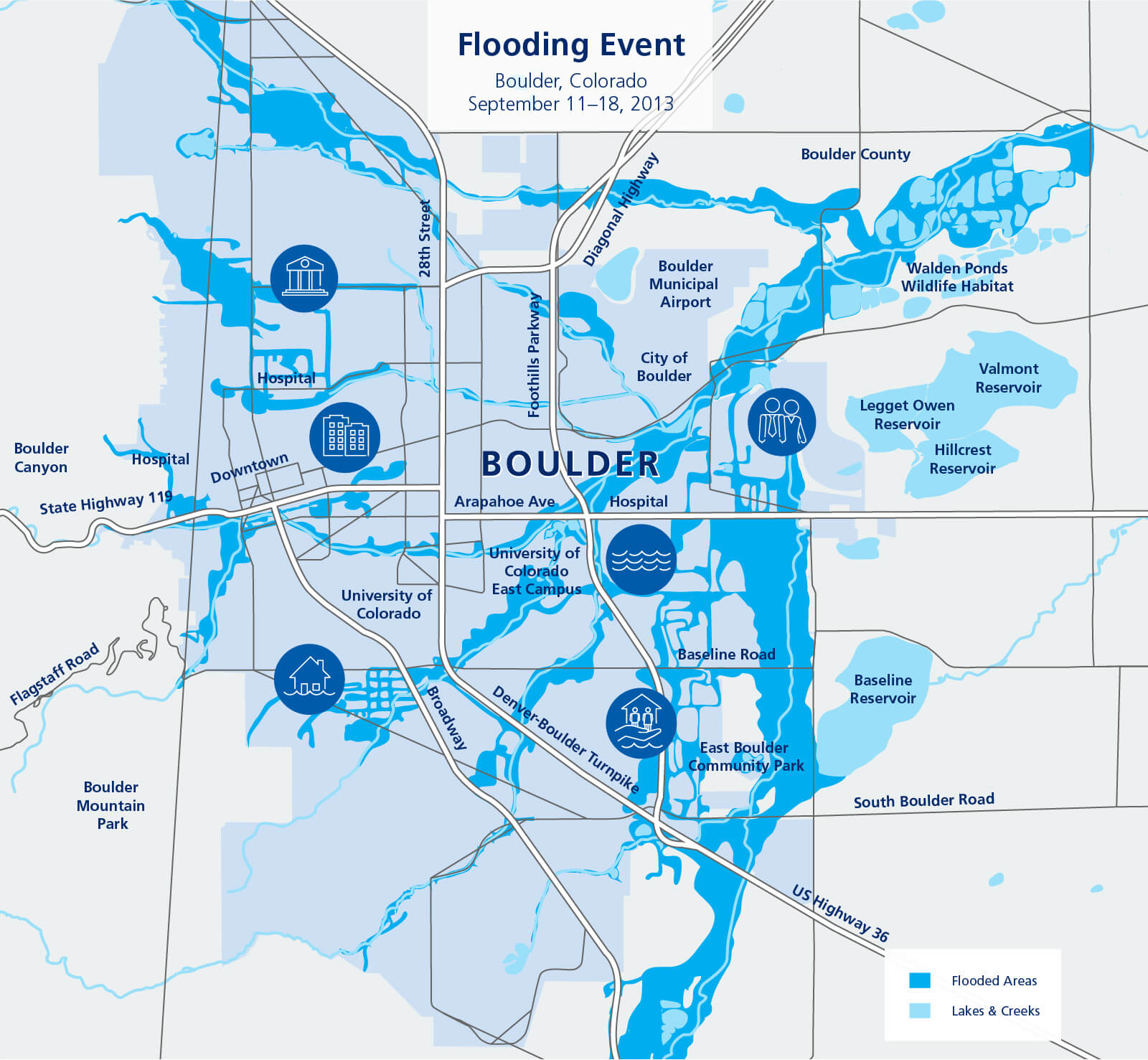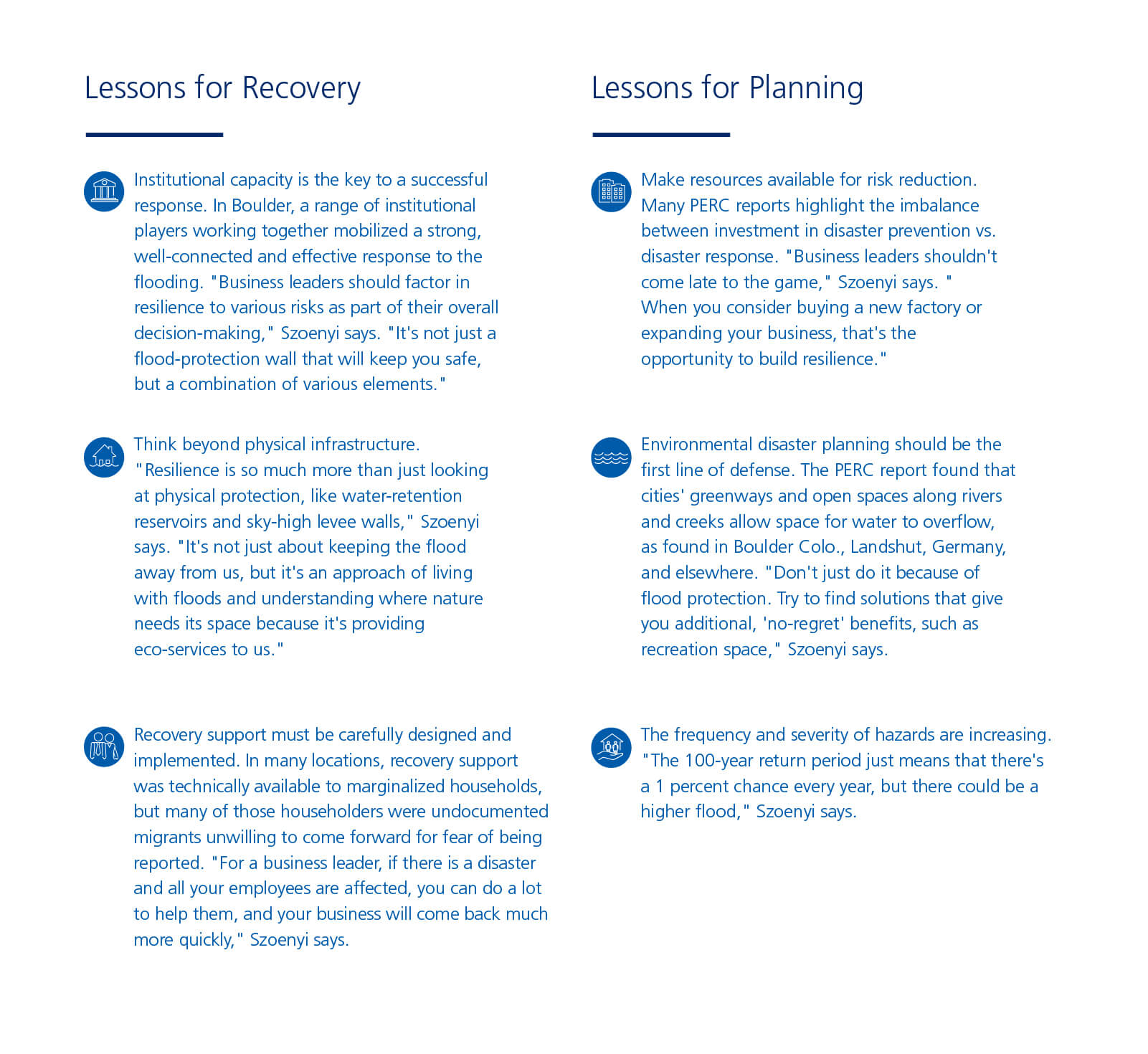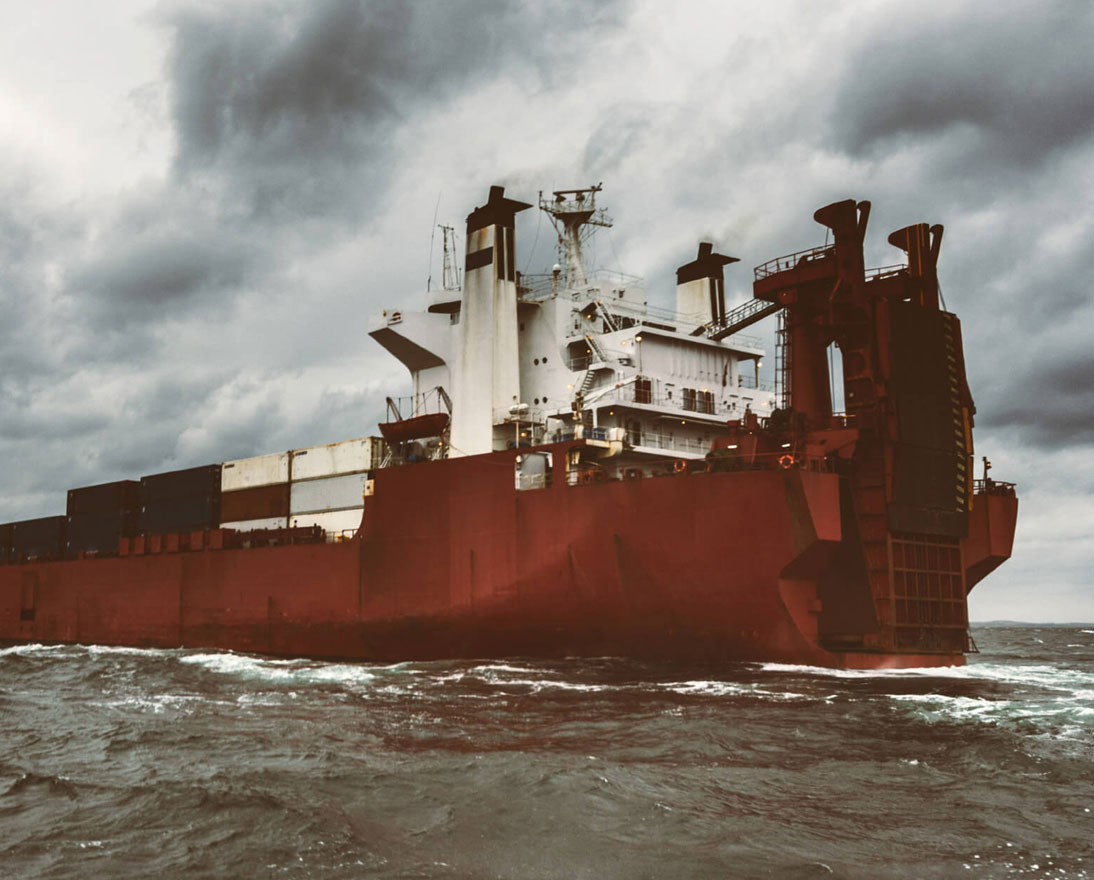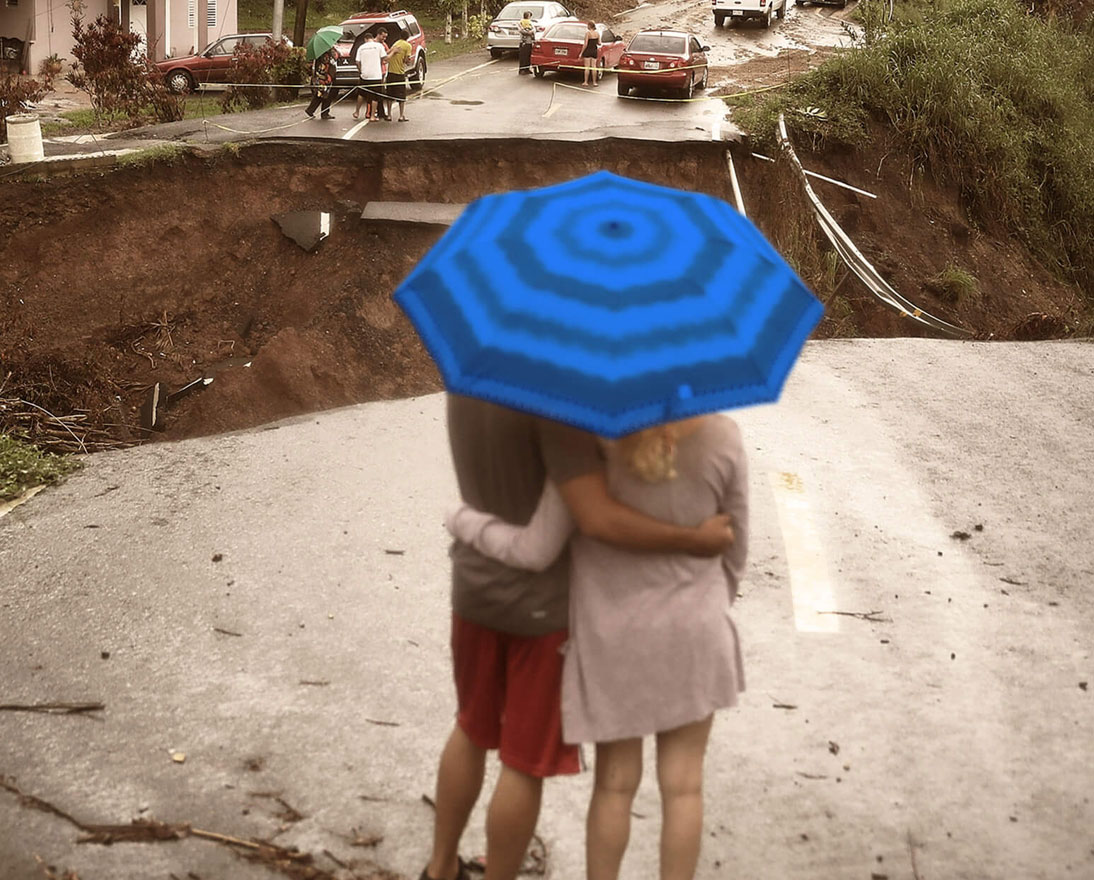Extreme Resilience: Lessons for businesses from Boulder, Colorado
Natural hazardsInfographicJune 6, 20182 min read
When it comes to major floods, the weather event is natural, but the aftermath of disaster is often manmade.
In the aftermath of an extreme weather event like a major flood, a community’s natural inclination is to return to normal as quickly as possible. Zurich Insurance Group Flood Resilience Program Lead Michael Szoenyi understands this desire, and he believes that studying flood events provides an opportunity to improve the response, and to build greater resilience to future disasters through Zurich’s Post-Event Review Capability (PERC) program.
"The event is natural, but the consequences are mostly manmade," says Szoenyi, who has conducted PERC studies following major flood events in Germany, Nepal, Morocco, the U.S. and the U.K. "With PERC, we're trying to explore why an event turns into a disaster. What goes wrong, and what can we learn from it?"
Each PERC report highlights actions that have worked well to better reduce flood risks or prepare for, cope with and respond to flood events, as well as the critical challenges. Since Zurich's Flood Resilience Program created PERC in 2013, PERC has become a crucial source of real-world insight to help make businesses and societies more resilient to floods and other natural hazards.
This interactive map shows the Boulder, Colo., floods of September 2013, when the city received 17 inches of rain in a single week. See below for some lessons for officials and business leaders that PERC has uncovered while studying flood events worldwide over the last five years.





